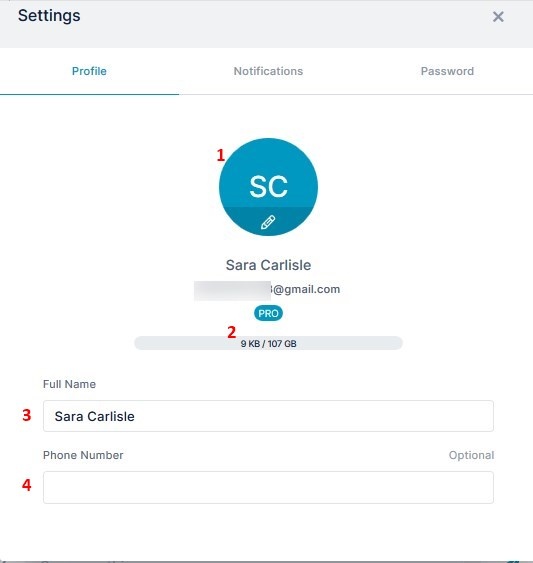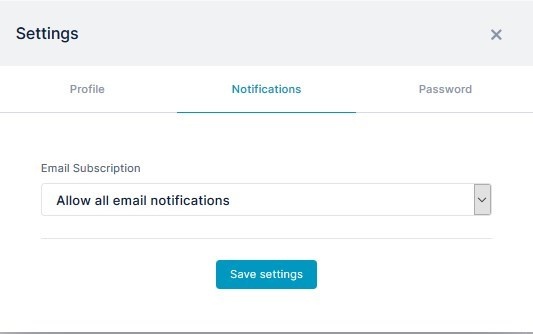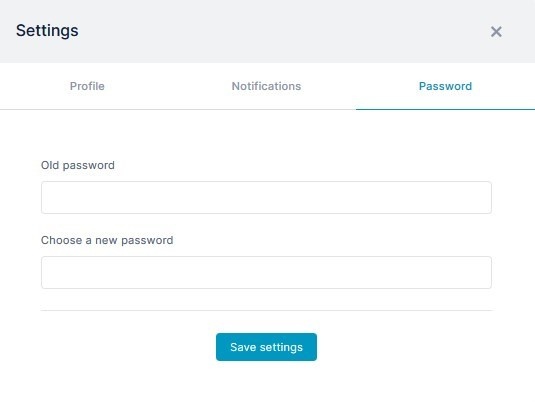You are viewing an old version of this page. View the current version.
Compare with Current
View Page History
« Previous
Version 4
Next »
The AirSend channel screen
| - Name of the channel.
In this example, the channel name is Blue Carrot Cafe. - Number of members of the channel. This includes the user who created the channel and all the other users they have added.
There are 2 members in this channel, Sara Carlisle, the channel creator, and jared, a user she has added. - Settings. Channel information and configuration opens. See Channel settings.
- Search box. The channel searches through xxxxx
- Notifications. This icon displays the number of unread notifications. Hovering over it displays the notifications. See Notifications, below.
- User signed in to the channel, in this case, Sara Carlisle. Click the down arrow to see a user menu. For more information, see User menu, below.
- Filter channel.
- Notifications list.
- Messages. Since this is a new channel, there are no conversations yet. The chat area also displays notifications when actions occur.
- Actions. Any member of the channel can click this tab to view and add actions that all members of the channel can see. See Adding actions.
- Files. Any member of the channel can click this tab to attach files and access files that other users have added. See Adding files.
- Wiki - A notepad where any member of the channel can add notes that all members can see. See xxxxx
- Emoji - Click to add an emoji to your message.
- Attachment - Click to attach a picture or file to your message. The picture or file also appears in Files in the right panel.
- Message box - Type in your message here, then click xxxxx.
- Send - Click to send your message. It appears in the Chat area.
|
Notifications
The user menu lets you perform tasks like changing your email notification settings, downloading AirSend mobile apps, and contacting AirSend support.
To access the user menu, click the user name in the upper-right corner of the AirSend channel screen.
| | Menu option | Description |
|---|
| Settings | Click to open a Settings dialog box.
On the Profiles tab, add and change details about your user profile:
 - Click the circle to upload an image of yourself. Listed below the image is your username, email address, and the version of AirSend that you are using.
- The bar displays the amount of space you have used and your total space quota. Hover your cursor over it to see how many items xx you have created in your system.
- Full Name is your display name. You may change it.
- Entering your Phone Number is optional.
On the Notifications tab, change the type of notifications you receive.

- In the Email subscription drop-down list choose one of the following options and click Save settings:
- Allow all email notifications - (default) Receive notifications about all activities performed by all users of the channel.
- Allow only mention notifications - Receive notifications about activites that users perform in a channel if you or a group you are a member of is mentioned. To mention another member in a message, click @ and begin to type their username. A list of matching names appears and you can select their name.
- No notifications (completely unsubscribe) - Do not receive notifications about any activities performed in the channel.
On the Password tab, change your password by entering your old password and a new password, and clicking Save settings.
 | | Contact support | Click to open the AirSend Contact Support page. From here, you can send an email to our support team, join our feedback channel, and access training videos. | | About | Click to view the latest versions and to access release notes. | | AirSend for Windows | Download AirSend to your own Windows computer. You can also download AirSend to OSX and Linux computers. See Download mobile apps, below. | | Download mobille apps | Click to download iOS and Android versions of AirSend and to access, Windows, OSX, and Linux downloads. | | Sign out | Sign out of AirSend. |
|




